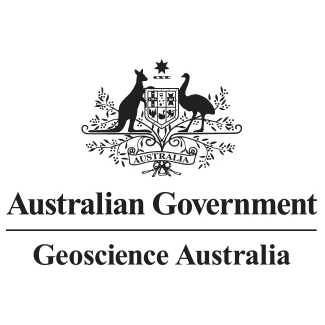Full description
Lineage
Maintenance and Update Frequency: asNeededNotes
PurposeThe interpretation of AEM conductivity sections in the ERC study area delineates the geo-electrical features that correspond to major chronostratigraphic boundaries and other geological features of interest. The geological era chronostratigraphic resolution was used when interpreting chronostratigraphic boundaries, specifically the contacts between Cenozoic, Mesozoic, Paleozoic, Neoproterozoic, Mesoproterozoic and Paleoproterozoic stratigraphic units. Non-chronostratigraphy-related interpretations were also collected, such as faults, the base of weathering, and discrete electrical conductors. Regional interpretation of the AEM conductivity sections was made to support GA’s EFTF Australian Resources Framework project. This regional interpretation contributes to the national-scale multilayered interpretation of AEM conductivity sections. Interpretations of the chronostratigraphic boundaries were also in-part made to support stratigraphic drill hole targeting in the Loch Lilly-Kars Belt area of interest, as part of the Delamerian Margins NSW National Drilling Initiative campaign. This stratigraphic drilling campaign was conducted as a collaboration between Geoscience Australia’s EFTF program’s Darling-Curnamona-Delamerian project, the MinEx CRC National Drilling Initiative and the Geological Survey of New South Wales.The chronostratigraphic and non-chronostratigraphic feature types (in the “TYPE” field) form the parent-level categories in the interpretations. These are the categories that were digitised during the interpretation; they are related to the geometry of each line segment, and are the symbolised categories displayed by the 3D GOCAD objects. All other (child) attributes are attached to the lines or points as ancillary data. Moreover, each interpretation line or point is attributed with interpretation-specific metadata, including geometry, chronostratigraphic relationship, geological contact type, stratigraphy, confidence, basis of interpretation, comments, new observations, interpreter’s details and interpretation date. The geometry data and pixel coordinates allow interpretations to be plotted in multidimensional spaces. Segment and vertex identifiers are provided to maintain polylines when converting between multidimensional spaces. The ground surface elevation directly above each vertex, derived from a digital elevation model acquired during AEM data acquisition, is provided (in the “AEM_DEM” field).Chronostratigraphic relationships are captured by the eras of the units above and below the interpretations, which identify if the high-level chronostratigraphic order is continuous or discontinuous. This information is complemented by the contact type field, which describes if contacts are conformable, unconformable, intrusive, faulted, etc. The stratigraphic unit fields capture the stratigraphic unit names and numbers for the units above and below the interpretation (if the interpretation occurs at an era boundary) or the stratigraphic unit name and number of the unit the interpretation occurs within (if the interpretation line occurs entirely within one unit). The interpreter’s confidence levels of the interpretation placement, and for the stratigraphic units occurring in the locations in which they are interpreted, are provided. All stratigraphic names and numbers are consistent with GA’s Australian Stratigraphic Unit Database, with all interpreted stratigraphic units being current at the time of the interpretation.The interpretations were performed by integrating the AEM conductivity sections with supporting multidisciplinary datasets. The types of datasets that support the interpretation are captured in the attributes of each line or point, in the basis of interpretation field. In addition to this, a field that refers to specific datasets that informed the interpretation, including bibliographical references, is also provided. A comments field provides further information about the interpretation. A field that captures any new observations made during the interpretation provides insight into features that were previously unknown. The names of the interpreter and the date of the interpretation for each line or point are also provided.Interpretation of potentially newly-discovered geological faults observed in the AEM conductivity sections, and known faults from the integrated supporting information, have been included in the dataset. Where the attitudes of faults were either indiscernible in the conductivity sections or were otherwise unknown, the faults have been interpreted as vertical. Although not performed consistently across the entire dataset, a visual assessment was also performed on features that displayed anomalously high electrical conductivities, in contrast to the background electrical conductivity; these were delineated using the ‘Major_conductor’ category. These assessments were made with reference to the inversion multi-plots, infrastructure datasets, aerial photography, etc., to ensure the anomalous electrical conductors were not originating from model misfit, lightning events, anthropogenic sources, etc. In some cases, these observations and interpretations were based on integration of the AEM data and models with additional information and supporting datasets including interpreter local area knowledge, literature, surface and subsurface geological maps, boreholes, magnetics and gravity. The anomalously high conductivities interpreted in this dataset could be from a range of sources, including electrically conductive black shale horizons and other conductive lithologies, and saline groundwater. Despite care taken to ensure that these features were of geological origin, the possibility remains that some features interpreted with this class could be from anthropogenic or inversion artefact sources.In addition to the data in this data package, this interpretation is also available for visualisation on Geoscience Australia’s Portal
Created: 15 06 2023
Issued: 26 06 2023
text: westlimit=138.00; southlimit=-39.00; eastlimit=145.50; northlimit=-27.00; projection=GDA94 / MGA zone 54 / projected (EPSG: 28354)
text: uplimit=-1500; downlimit=0; projection=Australian Height Datum / vertical (EPSG: 5111)
User Contributed Tags
Login to tag this record with meaningful keywords to make it easier to discover
Download data package (zip) [18.42 MB]
uri :
https://d28rz98at9flks.cloudfront.net/147992/147992_00_0.zip![]()
Download metadata statement (pdf) [1.1 MB]
uri :
https://d28rz98at9flks.cloudfront.net/147992/147992_01_1.pdf![]()
Multilayered chronostratigraphic airborne electromagnetic interpretation workflow
local : 147251
Canning Basin AusAEM interpretation: hydrogen storage potential and multilayered mapping
local : 146376
AusAEM1 Interpretation Data Package
local : 145120
Interpretation of the AusAEM1: insights from the world’s largest airborne electromagnetic survey
local : 134283
AusAEM 02 WA/NT 2019-20 Airborne Electromagnetic Survey
local : 140156
Canning Basin AusAEM Airborne Electromagnetic Interpretation Data Package
local : 147597
- global : ea873fbe-a357-4daf-8df3-70ae3b127bf3
- Local : pid.geoscience.gov.au/dataset/ga/147992
- DOI : 10.26186/147992



